ConEd's Energy Storage Program Will Allow Renewables to Offset Nuclear
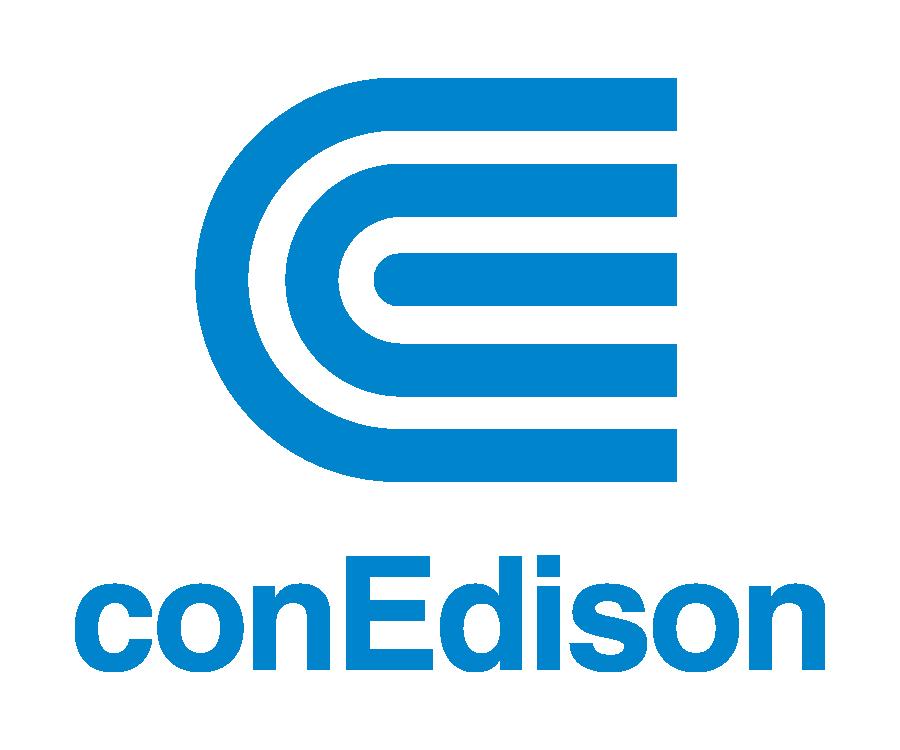

Nuclear power has long been controversial in this country, due to concerns about safety. Those concerns were exacerbated after the Fukushima disaster, whose impacts are still not fully understood. A lot of attention has been focused on the Indian Point nuclear plant, in Buchanan N.Y., on the east bank of the Hudson River, just 38 miles from New York City. The license for Unit 2 actually expired last September, and New York Gov. Andrew Cuomo would like the plant closed. But the Nuclear Regulatory Commission (NRC) is evaluating it for a possible 20-year extension.
In the meantime, Con Edison of New York, commonly known as ConEd, and the New York State Energy Research & Development Authority (NYSERDA), have developed a program to reduce demand, which would help reduce the need for generating capacity, making the prospect of eliminating the plant more feasible.
The program, which is called the Indian Point Energy Center Energy Efficiency, Demand Reduction and Combined Heat and Power Implementation Plan, is looking to cut out 125MW of demand through the three types of measures named in the title.
Following in the footsteps of the California Public Utility Commission, which recently set ambitious targets for energy storage capacity as a means of leveling out demand, this new plan will also invest heavily in storage.
The plan will provide an additional $2,000 per kW of stored energy on top of the $600 per kW currently offered by NYSERDA. By lowering demand using energy storage, Con Edison is eliminating the need to replace the Indian Point nuclear plant, which just had one of its two remaining reactors shut down in January due to a low water level.
I asked ConEd about the project and received the following responses from Colin Smart, section manager of commercial customer solutions.
TriplePundit: What is the storage capacity goal?
Colin Smart: We're looking to reduce demand by 100 MW through Energy Efficiency (“EE”) and Demand Reduction (“DR”), and 25 MW through Combined Heat and Power (“CHP”).
3p: What kinds of energy storage technologies are eligible?
CS: Many technologies that will help permanently reduce peak demand will be eligible for incentives. For energy storage, we have incentives for thermal and battery storage.
3p: What kinds of submissions are you seeing?
CS: While details of the program have not been announced, the early reaction from customers and technology developers has been encouraging.
3p: What led you to decide to subsidize storage at this level?
CS: We tried to develop an incentive schedule that balanced demand reduction with our belief in creating opportunities for new technologies. Energy storage technologies continue to develop and provide opportunities for customers. Thermal storage projects have been deployed at a number of New York City buildings and provide a positive impact on customers peak demand profiles. Batteries continue to emerge as an option and we are pleased to see the FDNY include a broader array of battery technologies in its new code. We recognize that the storage technologies face economic hurdles for deployment. But we hope this program will help create an environment for wider deployment, eventually resulting in improved, self-sustaining economics.
3p: How will this ultimately benefit ConEd?
CS: We believe it is important to help our customers better manage their demand and by doing so they can reduce costs for themselves and Con Edison. Con Edison operates one of the most complex electric distribution systems in the world, and our engineers are enthusiastic about understanding and supporting new technologies that can help customers. We believe that technologies such as energy storage will allow for more innovative design and operation of our system, while allowing us to remain the most reliable system in the country. This will result in a strong future for Con Edison and continued excellent service for our customers.
The impacts of incentives
I also sought out representatives of companies with technologies eligible for incentives under the program. Mark MacCracken, is the CEO of CALMAC and former chair of the U.S. Green Building Council. CALMAC makes thermal energy storage systems that primarily help reduce air conditioning loads by making ice at night and then using that ice to provide cooling during peak hours.
“The Con Ed program correctly focuses on the real electrical energy problem we have in this country which is how and when we use our power. With our national utility load factor now under 50 percent we have twice as much generating capacity as we need if we use electricity at a level rate day and night. Con Edison's program specifically attacks the peak demand problem.”
"Now," continued MacCracken, "buildings in NYC that install energy storage technologies, like CALMAC’s IceBank for example (already installed in many iconic NY buildings like Rockefeller, the Bank of America Tower and 55 Water St), will have it paid off in just 3 years, instead of the usual 7-year payback. That is a huge incentive."
On the battery side, there is Eos Energy Storage, who just announced that they will be integrating Ideal Power's 30 kW battery converter technology to be integrated with its Aurora energy storage system. The system will be connected to the grid and deployed by Con Edison in a New York City pilot project in the second quarter of 2014.
The Aurora system employs Eos’s safe, low-cost zinc hybrid cathode (ZnythTM) battery technology and is designed to enhance renewable energy generation, increase the grid’s efficiency and resiliency, and reduce utilities’ costs and consumers’ electricity bills. The compact modular design of both the battery pack and power converter is uniquely suited for office buildings and facilities with space-constrained environments.
Michael Oster, CEO of Eos Energy Storage had the following comment:
“We have successfully tested Ideal Power’s 30kW battery converter with our Aurora system to demonstrate bi-directional AC power flow and have been very pleased with the results. Based on this performance, Eos has selected Ideal Power for the multi-kW scale distributed energy storage system to be installed at a Con Edison site.”
“We are pleased to support the innovative work by Eos and to be selected for the pilot project with Con Ed. This represents an opportunity to demonstrate our complementary technologies and to create a best-in-class AC-integrated energy storage system,” said Dan Brdar, chairman and CEO of Ideal Power.
Ideal Power’s 30 kW battery converter offers high efficiency in a compact, modular and easy-to-install solution that can improve the economics for energy storage applications. It is based on the company’s patented Power Packet Switching Architecture (PPSA) that provides electrical isolation without the use of a bulky and expensive transformer. Among the many benefits of PPSA is the unique capability to reduce the size, cost and efficiency loss associated with conventional systems.
As the world is adapting to the realities of the day, which acknowledge the many benefits of renewable sources of energy, the need for effective energy storage solutions has been recognized and responded to. Ultimately, the approaches being pursued in this program: efficiency, storage, and demand management will be far less expensive per kW, cleaner, and safer than the construction and maintenance of new facilities.
RP Siegel, PE, is an inventor, consultant and author. He co-wrote the eco-thriller Vapor Trails, the first in a series covering the human side of various sustainability issues including energy, food, and water in an exciting and entertaining format. Now available on Kindle.
Follow RP Siegel on Twitter
3p Weekend: 8 Clean Tech Trends to Watch in 2014
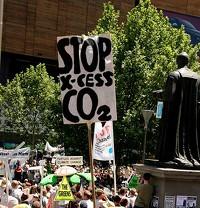

With a busy week behind you and the weekend within reach, there’s no shame in taking things a bit easy on Friday afternoon. With this in mind, every Friday TriplePundit will give you a fun, easy read on a topic you care about. So, take a break from those endless email threads, and spend five minutes catching up on the latest trends in sustainability and business.
Clean tech is a hot topic in sustainable business - combining sustainable thinking with high technology. To make sure you don't miss a thing, this week we rounded up eight clean tech trends to watch in 2014. Have something to add? Tell us about it in the comments.
1. Falling prices, booming capacity in the solar market
Over the past three years, we've seen U.S. solar prices plummet, from 21 cents per kilowatt-hour in 2010 to 11 cents by the end of 2013. As a result, last year was another banner, record-setting year for solar energy in the U.S., with 4,751 megawatts (MW) of new photovoltaic capacity installed–a year-over-year increase of 41 percent.
The solar industry continues to be a rare bright spot in terms of generating good jobs, as well as clean, renewable energy. Reports show that the solar job market is growing at 10 times the national average. Nearly 24,000 Americans got jobs in the U.S. solar industry last year, bringing the total number of U.S. solar industry jobs to 142,698 as of November 2013.
2. A new generation of batteries
Once prohibitively bulky and expensive, lithium-ion batteries have dropped significantly in both size and cost in recent years. Just this week, Tesla Motors announced that it will build a new “Gigafactory” to produce lithium-ion batteries at a rate able to support the manufacture of 500,000 electric cars per year. By 2020, the plant will be capable of producing as many lithium-ion batteries as the entire world produced in 2013.
The promise for the electric vehicle market is clear, especially given Tesla's plans to release a mass-market, long-range EV, but the fate of the next generation in lithium-ion batteries holds potentially greater impacts for both people and planet. Both Tesla and SolarCity have already announced plans to offer energy storage systems, and documents filed with the SEC for the Gigafactory plant detailed that some of the lithium-ion batteries will be used for “stationary storage applications." That is, batteries for storing energy for use in homes, commercial sites and utilities.
3. Offshore wind picking up steam
After years of squabbling over placement and regulations, offshore wind is finally becoming a reality in the U.S. Approved in 2010, Cape Wind, America’s first offshore wind farm, on Horseshoe Shoal in Nantucket Sound, Mass., received a boost in funding this month and is expected to secure the rest of its $2.5 billion budget by the third quarter of this year.
Meanwhile, the nation’s first offshore wind farm on the Pacific Coast cleared a crucial federal hurdle this month after Seattle’s Principle Power received approval to move forward on a commercial lease for the proposed $200 million, 30-megawatt project. In addition to clean energy benefits, a recent study shows that offshore wind farms may also slow down hurricanes--underscoring the multifaceted benefits of this clean tech trend.
4. Making waves in tidal energy
Yet to be explored in full, tidal energy holds potentially tremendous potential for clean power generation around the world. Picking up on the burgeoning trend, Lockheed Martin hooked up with Australia’s Victorian Wave Partners LLC earlier this year to begin the development of what’s billed as the world’s largest wave energy project. The 62.5-megawatt peak power wave energy generation project will be built off the coast of Victoria, Australia.
5. "Hybrid electric buildings" poised to transform commercial real estate
America’s commercial buildings may soon be radically redesigned into Prius-like hybrid energy centers. Earlier this month, Triple Pundit touched on this developing clean tech trend and its potential impacts for reducing commercial energy demand, lowering costs and boosting worker productivity.
6. The quest for nuclear fusion
The quest for an effective fusion reactor has been going on since the 1950s, but new developments suggest we may be on the cusp of turning the decades-long dream into reality. A recent piece in the New Yorker (which is worth a read in full) detailed the development of the International Thermonuclear Experimental Reactor, or ITER, in an Alpine forest in the South of France.
The complex machine will contain ionized hydrogen particles achieving temperatures more than ten times the sun's sweltering core--with the potential to "solve the world's energy problems for the next 30 million years." It may sound like a science fiction movie, but researchers say the reality isn't that far off. Thirty-five countries, representing more than half the world’s population, are invested in the project, and it's first target date for experiment is set for 2020.
7. Smart thermostats bring big data to the people
Earlier this year, Google nearly broke the Internet when it announced its purchase of Nest, a 3-year-old startup that designs and manufactures smart devices like thermostats and smoke alarms, for $3.2 billion in cash. While the Nest, and other learning thermostats like it, hold vast potential for homeowner (as well as commercial) energy savings, sustainability may not have been a significant factor in Google's big move.
A more likely motive is the company's aspirations to deepen its involvement in the Internet of Things, “a world in which everything from household gadgets to cars, clothes and pets are connected wirelessly to the Web.” That's not to say smart thermostats won't continue to play a role in how homeowners and commercial buildings use their energy. But the smart thermostats of tomorrow may play an even deeper role--as one of many gateways into what soon may become an even more interconnected world.
8. The rise of Thorium
Following the Fukushima nuclear disaster in 2011, more attention is being paid to safety and strategy around nuclear power generation. Three years after the disaster, India's Centre for Air Power Studies (CAPS) organized a national seminar on nuclear energy in New Delhi this week--with the topic of safety front-and-center.
What's not being discussed much in the mainstream is a potential game-changer for nuclear energy: Thorium reactors, a form of nuclear power that supposedly overcomes many of the concerns associated with traditional nukes. Unlike conventional light water reactor designs, the liquid fluoride thorium reactor is a type of molten salt reactor (MSR) that is generally considered to be inherently safer, cleaner and more economically viable than conventional reactors, but was not chosen by DOE as the technology of choice because it did not produce weapons grade material as a byproduct.
The concept has been largely languishing in the dust since the 1960s, but India recently announced that it is developing world's first mainly thorium-based nuclear reactor in Mumbai--indicating we may be on the cusp of a revolution in nuclear.
Image credit: Flickr/macinate
Based in Philadelphia, Mary Mazzoni is an editor at TriplePundit. She is also a freelance journalist who frequently writes about sustainability, corporate social responsibility and clean tech. Her work has appeared on the Huffington Post, Sustainable Brands, Earth911 and The Daily Meal. You can follow her on Twitter @mary_mazzoni.
Who's Who in Sustainable Palm Oil Sourcing

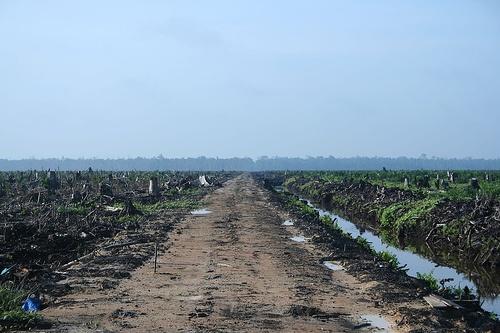
The push for sustainably sourced palm oil has been gaining prominence in the past few years. Quite a number of organizations have stepped up to the plate recent months to lobby for improved sourcing methods that don’t destroy forests in countries like Indonesia and Malaysia. Environmental advocates ranging from Greenpeace and Rainforest Action Network to local zoos like Woodland Park, Cheyenne Mountain and St. Louis have taken a stand to encourage oil producers and purchasers to make the switch to sustainable sources.
Many companies have heard that call and set commitments for change. But as the Union of Concerned Scientists has pointed out recently, there’s a difference between making the commitment and making the comprehensive change.
To be fair, conversion to sustainably sourced palm oil is no small feat. It’s expensive for a company to do so. It requires commitment and it requires planning. But companies like Unilever, which spearheaded a successful transition to sustainable, certified sources three years earlier than anticipated and Nestlé, which at the behest of Greenpeace supporters, partnered with its supplier, Golden Agri Resources and The Forest Trust to develop a better model for sourcing back in 2010, underscored the urgency of this change.
So how do consumers know who has made the pledge to switch to sustainable sources, and who hasn’t yet? And how do they know what that pledge really means?
You can find out here, on the pages of Triple Pundit, where we try to feature not only the names of those companies and organizations that push for conversion, but what it took and what they see as an outcome of their sustainable farming and sourcing efforts.
But if you are looking for a company-by-company comparison of the top ten companies already working toward that goal, the Union of Concerned Scientists has undertaken that effort.
Its online Palm Oil Scoreboard is exactly that: a register of the progress that each major palm oil user has made over the past few years. As the UCS has noted, ethical sourcing isn’t always just what the company buys that counts. Oftentimes its environmental rating depends on how it grows or produces the ingredient itself and how it manages a responsible supply chain.
Does the company have a commitment to ensure the oil it uses is deforestation free? Does it also acknowledge the importance of ensuring the preservation of peat land that is essential to sustaining a healthy forest? Are its products and sources traceable? Does it support transparency in its operations? And given the devastated conditions of some areas like the islands of Sarawak and Sabah, are their actions timely?
The list also gives a summary of what each company has done, what its stated commitment is toward each area of concern, and what it needs to do to be able to say it is sourcing ethically. And, it doesn't just look at packaged food producers, but personal care manufacturers and fast-food services.
Sadly, none of the companies on the list has yet received a sterling review on all counts (although some come impressively close). But as we said in the beginning transitioning to sustainable sourcing isn’t easy when world sources have relied upon other methods for so many years.
Hopefully the UCS scoreboard will serve as another encouragement for companies to make the change. And hopefully as well, the UCS will consider expanding this list so that mid-sized and small companies are reminded that big or small, the effort counts.
Image of palm forest: Fallacia
Image of deforestation due to unsustainable palm tree harvesting: H Dragon
Image of successive deforestation: Sandra Diaz
Indonesia's 2nd Largest Pulp And Paper Company "APRIL" Falls Short In Forest Management Policy


At the end of January, environmental science and conservation news site Mongabay, reported that Indonesian Paper giant, Asia Pacific Resources International Holdings Ltd (APRIL) had announced a new environmental policy aimed to stem criticism about its forestry practices, which continue to be deleterious to Indonesia's natural rain forests.
APRIL is Indonesia's second largest pulp and paper producer after Asia Pulp and Paper (APP), and the two account for about 80 percent of the country's total pulp and paper output. In recent months we have written extensively about APP's ongoing commitment to their forest clearing moratorium and increasing transparency under their Forest Conservation Policy (FCP) - so APRIL's announcement at face value is a welcome one; However it's also one, as Mongabay says, that has been "immediately blasted" by activist groups.
Certainly, APRIL's announcement of their Sustainable Forest Management Policy seems somewhat less definitive than the provisions made in APP's FCP announced in Feb 2013; you can read APRIL's press release here for the specifics. For example, APRIL commits that they will put, "an end to the establishment of new plantations by December 2014," which, implies (rather than expressly states) a commitment to stop natural rainforest clearing.
In contrast, APP's FCP last year took a much more categorical position, committing to a complete moratorium on any further natural forest clearing with immediate effect (January 31st, 2013), commensurate with High Conservation Value (HCV) assessments to be carried out across all supplier concessions.
Another provision in APRIL's announcement is that its mills will only take wood fibers that are sourced entirely from plantation forests by 2019. In contrast, APP made that same commitment to be effective from August 31st, 2013 - meaning that by the time APRIL makes good on this promise, APP will have been free of natural rainforest wood for six years.
APRIL's new policy details other things too. For example, the claim that they will "strive to support conservation areas equal in size to APRIL’s plantation areas." The word "strive" begging the question, is this a commitment or a look and see? They also commit to a "doubling in the size of forest restoration programs to 40,000 hectares." These are not objectionable aims but they offer no time frame or concrete action. So what do the critics say?
Rainforest Action Network (RAN) writing in response to APRIL's announcement remains skeptical that the company is heading towards true reform. They say the "commitment itself is murky, as APRIL fails to disclose the most basic information needed to understand what is being promised," and "APRIL has repeatedly failed to meet similar commitments, raising the possibility that this is simply another PR move to alleviate pressure and scrutiny from consumers and NGO’s." Indeed, Mongabay suggests the motivation of APRIL's announcement, while unclear, could be because The world Business Council on Sustainable Development warned of APRIL's expulsion just days before.
RAN also makes it clear APRIL doesn't go far enough in scope, stating that any commitments the company makes needs to apply to APRIL's sister companies and its parent company, Royal Golden Eagle International (RGE); RAN says APRIL's sustainable forest management policy fails to achieve that.
But it has to be said, similar kinds of statements were made about APP and their failure to follow through on promises made in the past, and though they still have their critics (RAN and WWF both) APP has since been able to build increasing credibility by taking measurable action. They've also brought in 3rd parties to help carry out environmental assessments, and have built a greater degree of transparency - notably engaging the Rainforest Alliance to act as a 3rd party evaluator which both WWF and RAN applaud.
So, perhaps its best to encourage APRIL to refine and improve their plan rather than slam them, because this could be a fresh start that can be improved upon too. In fact, Mongabay says WWF has "cautiously welcomed" APRIL's announcement, while the company states in its press release that WWF will be invited into its Stakeholder Advisory Committee.
In a way, this would not be a dissimilar trajectory to the one taken by APP when they released their sustainability road map a couple of years ago and were criticized for it not going far enough either. Commendably, APP brought in Greenpeace who helped them translate demands from activist groups into a workable action plan that could be implemented on the ground. Their work since builds on that and there is no sign that they plan to backtrack now.
As I wrote last month, APP has called for more cooperation with other organizations because the preservation of the rainforest requires a landscape approach spanning several concession areas of differing uses. APP has found that opportunities for improvement cannot be resolved by one company alone, so maybe this is an opportunity for collaboration on best practices? After all, we can be sure the likes of WWF, RAN and Greenpeace will keep up the pressure.
Photo By Author
Follow me on Twitter: @PhilCovBlog
Bridgestone Arena Recycles Cigarette Butts with Help from TerraCycle


Despite a nearly 30 percent decline in cigarette smoking in the U.S. over the past decade, cigarette butts are still the most littered item across the country and the planet, according to Keep America Beautiful.
To tackle this litter problem locally, Nashville’s Bridgestone Arena, home to the National Hockey League’s Predators, has teamed up with the Nashville Clean Water Project and upcycling company TerraCycle to collect and recycle cigarette butts discarded at the sports and concert venue. The arena is one of the first venues in North America to launch a recycling program for this traditionally difficult-to-recycle material.
“We’re proud of our building and our community, and we are taking this opportunity to set an example in Music City and show how simple it can be to help reduce litter and maintain clean water,” Chris Parker, Nashville Predators’ executive vice president, said in a statement.
Under the program, Bridgestone Arena staff collects cigarette butts littered outside the venue on sidewalks and in plaza areas where concert-goers and Predators fans are allowed to smoke. Butts are packed in boxes and shipped to TerraCycle’s New Jersey recycling plant, with postage paid by the upcycling company.
TerraCycle, which specializes in collecting materials that cannot be recycled through most curbside programs and turning them into innovative, affordable products, recycles the cigarette butts it receives into industrial shipping pallets and reworks any remaining tobacco into tobacco composting.
Since Bridgestone Arena began collecting cigarette butts in mid-December, the venue has rounded up an estimated 30,000 butts, weighing in at 30 pounds.
As someone who coordinated recycling programs for cities in the San Francisco Bay Area, I understand all too well that no matter how many recycling and trash bins you install and no matter how much try to educate the public, some people will always throw away items in the wrong bins or litter. That’s why Bridgestone Arena’s program is commendable: The company is using precious staff time to gather and sort out cigarette butts – rather than simply set out collection bins for the material and expect visitors to dispose of them properly. Then the program takes its environmental responsibility a step further: not only preventing cigarette butts from entering the environment and endangering wildlife, but also recycling the waste material into a valuable new commodity.
Cigarette butts make up 38 percent of U.S. roadway litter, according to Keep America Beautiful, often ending up in waterways and oceans where they are toxic to aquatic life.
Bridgestone Arena’s collection program is part of a campaign by the Nashville Clean Water Project to collect and recycle cigarette litter in Tennessee’s capital. The nonprofit is currently raising funds through Indiegogo to start similar collection programs throughout the city – at other businesses and through neighborhood associations.
“The participation of the Nashville Predators and Bridgestone Arena shows exceptional community leadership,” Mark Thien, said executive director of the Nashville Clean Water Project, operating nationally as Water City USA, in a statement. “We hope organizations throughout the country will follow their lead and join our no-cost program.”
Businesses and offices across the country can sign up for TerraCycle's Cigarette Waste Brigade and collect and ship cigarette butts to TerraCycle for recycling.
Image credit: Flickr/Maxwell GS
Passionate about both writing and sustainability, Alexis Petru is freelance journalist based in the San Francisco Bay Area whose work has appeared on Earth911, Huffington Post and Patch.com. Prior to working as a writer, she coordinated environmental programs for Bay Area cities and counties. Connect with Alexis on Twitter at @alexispetru
New Commercial Refrigeration Standards to Save Billions in Energy Bills
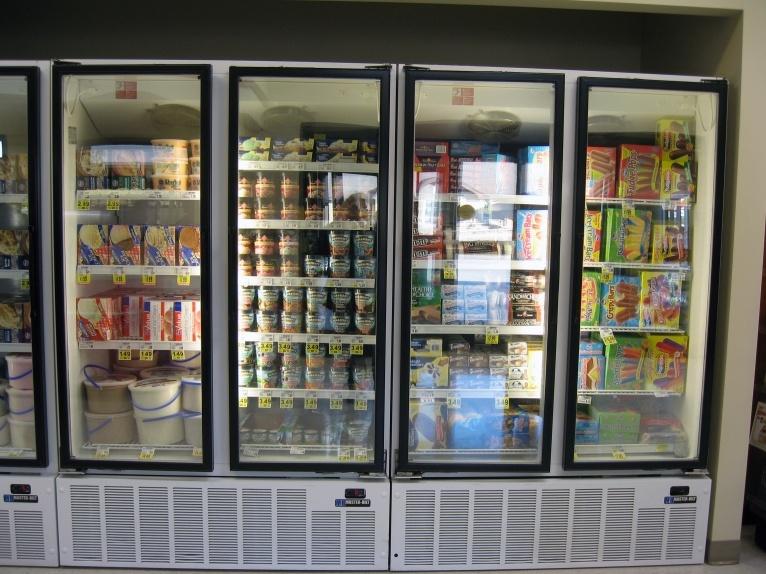

When it comes to energy efficiency, even small improvements can go a long way.
Following through on President Barack Obama's Climate Action Plan, the Department of Energy (DOE) on Feb. 28 issued new energy efficiency standards for commercial refrigeration equipment. Over the ensuing 30 years, it's projected that the new standards will reduce carbon pollution by 142 million tons – the equivalent of that produced by generating electricity for 14.3 million U.S. homes – while also saving businesses as much as $11.7 billion on energy bills.
An update of standards set in 2009, the new energy efficiency standards will yield on the order of a 30 percent improvement in the energy efficiency of commercial refrigeration equipment as compared to current standards, according to the DOE.
The outsized benefits of higher energy efficiency standards
Operating 24x7x365 in grocery stores, mini-marts, supermarkets and food storage facilities, commercial refrigerators, freezers and refrigerator-freezers are essential to our modern industrial food supply chain. They also suck up a lot of juice. As the DOE elaborates:
“A large commercial refrigerator used in grocery stores can consume up to 17,000 kilowatt-hours (kWh) of power per year, while a large commercial freezer can use up to 38,000 kilowatt-hours of power per year.”
As we know and is being better understood and increasingly well documented, generating all that electricity produces lots of pollution – carbon and greenhouse gas emissions that are warming global climate, as well as emissions of a range of chemicals that deplete the ozone layer and contaminate our land and water resources.
Energy efficiency, savings and reducing pollution
Given the number of commercial refrigeration units in operation and their being in constant use, even small improvements in energy efficiency can result in large reductions in power consumption, and hence emissions not only of carbon and greenhouse gases, but of chloroflurocarbons (CFCs), hydrochlorofluorocarbons (HCFCs), freons and halons used in commercial refrigeration, solvents, propellants and foam-blowing agents.
Emissions of this latter group of gases has been responsible for depletion of the earth's ozone layer and are in the process of being phased out of use worldwide as per the terms of the UN's Montreal Protocol on Substances that Deplete the Ozone Layer. They also contribute to global warming, an issue that the U.S., along with the European Union (EU) and other countries, are currently seeking to address by phasing out use of hydroflurocarbons (HFCs).
Establishing higher energy efficiency standards will also yield financial benefits, as Energy Secretary Ernest Moniz stated in a press release,
“In our supermarkets and grocery stores, refrigeration can use almost 40 percent of total energy use – contributing a large portion of these businesses’ utility bills. By improving the energy efficiency of commercial refrigeration equipment – like restaurant-size fridges or the deli case at your local grocery store – we can make our businesses more competitive, reduce greenhouse gas emissions and save money.”
Following through on President Obama's Climate Action Plan
Engaging consumer and environmental advocacy groups as well as industry participants and other stakeholders, in a lengthy and comprehensive standards-setting process, the new commercial refrigerant standards will go into effect in late February or early March 2017, three years after their publication in the Federal Register. They're only the latest in a series of energy-efficiency actions the DOE has been taking in accordance with President Obama's Climate Action Plan.
In President Obama's first term, the DOE established new minimum energy efficiency standards for dishwashers, refrigerators and many other types of consumer and household equipment. Through 2030, these are expected to yield hundreds of billions of dollars in consumer savings by reducing their energy bills, as well as save enough electricity to power over 85 million homes for two years.
Announcing his historic Climate Action Plan last June, the President established new energy efficiency standards for appliances and for federal buildings that are expected to reduce carbon pollution by a minimum 3 billion tons by 2030. That's the equivalent to nearly half the carbon pollution produced by the U.S. energy sector in its entirety over one year.
Aiming to achieve these goals, the DOE last August proposed the rule establishing new commercial refrigerant energy efficiency standards. It also proposed a rule to improve the energy efficiency of walk-in coolers and freezers, such as the milk displays at supermarkets.
Image courtesy Energy.gov
Jaguar Land Rover extends collaboration with ClimateCare


Jaguar Land Rover aims to create a range of humanitarian, conservation, environmental and educational initiatives as part of its new Environmental Innovation Strategy. In collaboration with ClimateCare, the strategy’s goal is to benefit 12m people around the world by 2020.
As well as focussing on reducing the whole life environmental impacts of its products, manufacturing and supply chain operations, the luxury car brand's strategy will deliver positive impacts in the communities where it operates by improving health, reducing poverty and providing new opportunities for employment and education.
Jaguar Land Rover has worked with ClimateCare since 2007. To deliver the new target of creating opportunities for 12 million people Jaguar Land Rover will work with ClimateCare for a further three years to develop and deliver world- leading carbon for development projects.
Jaguar Land Rover has taken the first step towards its target by supporting a region of the LifeStraw Carbon for Water project with ClimateCare and global health company Vestergaard in Kenya. The project reduces carbon emissions and provides safe water to over 700,000 people by distributing LifeStraw water filters to the entire Busia region of Kenya.
"This is the first time that one business has supported a complete geographic region of this project, and means we can better identify the positive impact Jaguar Land Rover's support has on local communities," explained ClimateCare Director, Tom Morton.
ClimateCare is working with Jaguar Land Rover and LBG(the London Benchmarking Group) to agree consistent measurement methodologies that will be used to accurately report the number of lives improved throughout the Jaguar Land Rover programme.
Another Banner, Record-Breaking Year for U.S. Solar
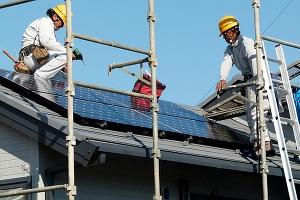

A new report shows that 2013 was another banner, record-setting year for solar energy in the U.S., with 4,751 megawatts (MW) of new photovoltaic (PV) capacity installed--a year-over-year increase of 41 percent--with another 410 MW of concentrating solar power (CSP) coming online. A record 2,106 MW of solar power capacity was installed in the fourth quarter alone, amounting to 44 percent of the annual total. That bests the old quarterly record by 60 percent.
As of year-end, there were more than 445,000 solar electric systems generating clean, renewable electrical power in the U.S. That amounts to more than 12,000 MW of PV and 918 MW of CSP capacity–enough for some 2.2 million average U.S. homes, according to the GTM Research-Solar Energy Industry Association's (SEIA) “Solar Market Insight Year in Review 2013.”
Solar accounted for 29 percent of all new electricity generation capacity added in 2013, second only to natural gas, which accounted for 46 percent. In the aggregate, 2013 statistics indicate that solar energy is on the cusp of going mainstream in the U.S., if it isn't already there. A geographic breakdown of solar installations shows that this is indeed the case, but only in a few U.S. states.
Solar in the geographic mix
California alone accounted for more than half of American PV installations in 2013, adding more solar capacity last year than was installed nationwide in 2011. The top five states for solar energy installations in 2013, California, Arizona, North Carolina (a surprising third!), Massachusetts and New Jersey, accounted for 81 percent.
The high level of geographic concentration reveals just how far solar energy is from being a major factor in the mainstream energy mix for the U.S. as a whole. But it also reveals the tremendous growth potential that still exists. With solar costs continuing to fall, technology continuing to improve, and acceptance at the grassroots level and among large investors on the rise, it appears that even better times lie ahead.
Ongoing declines in solar manufacturing and installation costs, along with ongoing increases in energy conversion efficiencies, continue to drive solar deployments higher. So too does continuing support at the state and federal levels. And so too do new financing mechanisms that are broadening access to new categories of investors and lowering the cost of capital for industry participants.
Even better days are coming
Also looming on the horizon is the prospect of affordable and smart battery storage systems, a development that should provide much in the way of new impetus to an already fast growing U.S. solar energy market. As SEIA President Rhone Resch states in a press release:
“Today, solar is the fastest-growing source of renewable energy in America, generating enough clean, reliable and affordable electricity to power more than 2.2 million homes–and we’re just beginning to scratch the surface of our industry’s enormous potential."
The solar industry continues to be a rare bright spot in terms of generating good jobs, as well as clean, renewable energy, Resch continued.
“Last year alone, solar created tens of thousands of new American jobs and pumped tens of billions of dollars into the U.S. economy. In fact, more solar has been installed in the U.S. in the last 18 months than in the 30 years prior. That’s a remarkable record of achievement.”
The following, courtesy of the SEIA and GTM Research, are some more key takeaways from the “Solar Market Insight Year in Review 2013” report:
- There is now a total of 12.1 GW of PV and 918 MW of CSP operating in the U.S. That represents an 80 percent increase in CSP capacity.
- There were 140,000 individual solar installations in the U.S. in 2013, and a total of over 445,000 systems operating today. The market value of all PV installations completed in 2013 was $13.7 billion.
- Weighted average PV system prices fell 15 percent in 2013, reaching a new low of $2.59 per watt in the fourth quarter.
- The groups forecast a 26 percent PV installation growth in 2014, with installations reaching nearly 6 GW. Growth will occur in all segments, but will be most rapid in the residential market, they predict.
- The wave of concentrating solar power installations slated for completion at the end of 2013 into 2014 kicked off with the 280 MW Solana project and the Genesis Solar project’s initial 125 MW phase. In early 2014, BrightSource’s notable Ivanpah project also began operating and SolarReserve’s Crescent Dunes began commissioning.
Tension Mounts as U.S. EPA Comes Out Swinging in Support of Bristol Bay


How's this for timing: Just a few weeks in advance of a special Triple Pundit series on sustainable fisheries, last Friday the U.S. Environmental Protection Agency issued a strongly--and we mean strongly--worded announcement that it will use its authority under the Clean Water Act to to protect the sockeye salmon fishery in Bristol Bay, Alaska, which just happens to be the largest sockeye fishery in the entire world.
Triple Pundit took note of the EPA announcement earlier this week (here's that article), and it's worth revisiting the topic to make a point about the growing tension between renewable and non-renewable resources in an increasingly globalized economy.
A slam-dunk for protecting Bristol Bay
The EPA announcement came in response to the proposed Pebble Mine, a copper mining operation. Here is the money quote from the EPA regarding its unusually aggressive announcement:
This action...reflects the unique nature of the Bristol Bay watershed as one of the world’s last prolific wild salmon resources and the threat posed by the Pebble deposit, a mine unprecedented in scope and scale.
That statement is dramatic enough, but beyond this one instance the EPA action indicates a renewed attentiveness to the potentially devastating impact of non-renewable resource harvesting on renewable resources, so let's see how this plays out on a broader scale.
In Friday's announcement, EPA Regional Administrator for Region 10 had this to say:
Bristol Bay is an extraordinary natural resource, home to some of the most abundant salmon producing rivers in the world. The area provides millions of dollars in jobs and food resources for Alaska Native Villages and commercial fishermen. The science EPA reviewed paints a clear picture: Large-scale copper mining of the Pebble deposit would likely result in significant and irreversible harm to the salmon and the people and industries that rely on them.
The Bristol Bay salmon fishery
According to the EPA, Bristol Bay is where nearly half of the world’s wild sockeye salmon get their start, with an average of 37.5 million fish each year. That includes the five Pacific salmon species native to North America (sockeye, coho, Chinook, chum and pink) along with about 20 other fish species. If those numbers seem high, that's no accident. The EPA credits the "exceptional water quality in streams and wetlands" for a healthy habitat.
Putting aside the happy salmon for the moment, EPA also credits Bristol Bay with generating hundreds of millions of dollars in economic activity, involving more than 14,000 full and part-time local jobs.
The EPA Pebble Mine assessment
The Pebble Mine, according to EPA, would be the biggest open-pit mine ever built in North America, and that's just for starters. Disposing of mine waste would require the construction of at least three dams at the headwaters of two rivers that account for approximately half the sockeye salmon population.
EPA's assessment of the environmental impacts was unusually strong, but it was meticulously vetted. The announcement came only after the release of a detailed study undertaken in 2010 on request of several Alaska Native tribes in the region.
The study, “Assessment of Potential Mining Impacts on Salmon Ecosystems of Bristol Bay, Alaska,” is well worth a read in full, but the gist of it is that although some risk mitigation is certainly possible, when you take into consideration everything that could go wrong it all adds up to one glorious disaster.
In light of the string of environmental disasters in the U.S. over the past few years, from the Tennessee coal ash spill in the Emory River to the BP Gulf oil spill and the Enbridge pipeline spill in the Kalamazoo River on up to the West Virginia coal-washing chemical spill and the North Carolina coal ash spill, that's a pretty high level of risk.
As for next steps, the U.S. Army Corps of Engineers cannot issue a permit for the mine unless and until the EPA is satisfied.
That prospect seems highly unlikely. In Friday's announcement, EPA cited the more than 850,000 comments it received from a wide variety of stakeholders in the region committed to preserving Bristol Bay.
In that regard it's notable that the jewelry company Brilliant Earth has been in the vanguard of promoting more sustainable mining practices. Brilliant Earth co-founder Beth Gerstein just guest-posted an article to that effect on Triple Pundit last week, underscoring her company's use of recycled materials as a more sustainable pathway to building a business on personal accessories.
Colonialism, much?
Take a quick look back at basic American history, and you'll see that the 13 original colonies were engineered to produce raw materials for companies in their home nation overseas.
Those days have long since gone, but history has a habit of repeating itself, and the U.S. again finds itself in the position of compromising the health and safety of its communities and its natural resources in order to satisfy the thirst for raw materials overseas.
That includes heavy lobbying to increase exports of natural gas, entailing more negative impacts from natural gas fracking. China has also become a player in U.S. fossil fuel development, and then of course there's Canada, adding to fossil fuel transportation risks with the proposed Keystone XL tar sands oil pipeline.
Now we can add copper to the list: The lead developer of the Pebble Mine is the Canada-based company Northern Dynasty Minerals Ltd.
Image credit: Ingrid Talary
First Pro-Weed Commercial Airs on Major Networks


It seems to be just a matter of time. Marijuana legalization is moving across the country. Today, 20 states already allow medical cannabis. On Wednesday, the Washington, D.C. City Council voted almost unanimously to decriminalize marijuana in small amounts, while Colorado and Washington state have legalized the stuff. It's flowing into daily lives, and now we're seeing the first network television commercial for medical marijuana--just playing right there on the TV like they're selling Tylenol or Hot Pockets.
Airing on national networks in the state of New Jersey--networks like A&E, Fox, CNN, Comedy Central, Food Network and the History Channel--a company called Marijuana Doctors is making the case for buying the product from trusted clinical sources.
The television ad features a slick talking, back alley sushi-pusher selling tuna and sashimi from the inside of his leather jacket. The commercial ends saying, "You wouldn't buy your sushi from this guy, so why would you buy your marijuana from him?" The message here, in form and choice of medium, seems to be right in line with MarijuanaDoctors.com's mission of "legitimizing the process for the booking and selection of medical marijuana doctors." Major network television is just about as normalizing and arguably legitimizing as it comes. And it's telling that the networks agreed to air the ad. Sure, money talks. But so does viewer outrage. Apparently the networks didn't think that would be an issue.
http://www.youtube.com/watch?v=jyzxs33B6FA
According to a press release, Marijuana Doctors CEO Jason Draizin said it took some work to convince Comcast that such a commercial is important and legitimate saying: "Securing the airtime for our commercial on a major network was extremely difficult and at the same time, extremely satisfying... We recognize that the sale and use of marijuana is still considered very controversial and we are pleased that Comcast understands that there are legitimate businesses providing legitimate and legal services to people who have legitimate needs."
It took some guts for Comcast to agree to the commercial. This isn't about selling happy-fun-time weed. This is about giving people safe access to a legitimate medication.
Medical marijuana is legal for the people of New Jersey and has been since 2010. They're still dipping their toes into the cannabis thing, however, with quite a lot more restrictions on medical marijuana use for children than for adults, which seems odd since little kids seem like they'd be the ones least likely to seek the stuff out recreationally rather than for legitimate and serious illnesses. The state of New Jersesy only allows children to take medical cannabis in harder-to-obtain edible form, not liquid form as found in other states. Gov. Chris Christie recently rejected a bill that would have allowed people to buy marijuana in another state, in whatever form, and bring it to New Jersey.
This is still very much a national experiment which more and more states seem to be embracing. Mayor Vincent Gray is expected to sign the latest Washington, D.C. local legislation, then it will go to the U.S. Congress, which can reject it. The federal government, however, still publicly opposes the nation's growing momentum toward legalization. The Obama administration's statement about marijuana legalization on WhiteHouse.gov makes clear that they oppose it as a significant safety risk to the nation because it would "increase the availability and use of illicit drugs."
So the debate continues, although with growing acceptance and opportunities for hard evidence on the efficacy of medical marijuana.
Image credit: Flickr/david_shankbone